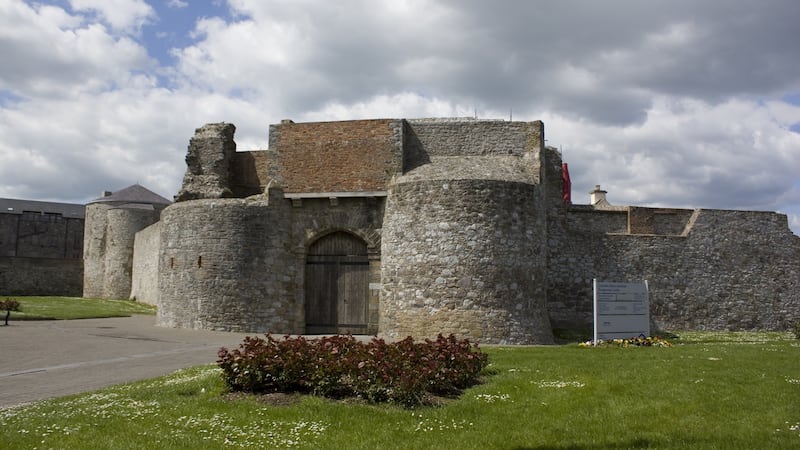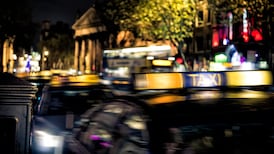The Wild Atlantic Way route developed by Fáilte Ireland lit a fuse under the tourism industry on the western side of the country. Now, the tourism agency wants to repeat the trick in the east. Ireland's Ancient East, as it is now branded.
Leaving the west behind, The Irish Times traversed the country once more to ask tourism businesses on the east how they are faring. First stop was the sunny southeast and the seaside town of Dungarvan, Co Waterford. This is a traditional tourist area, although it is especially popular with domestic visitors.
Brian Wickham is the proprietor of the charming Cairbre House bed and breakfast, on the waterfront at the outskirts of the town. It is probably the oldest continuously run B&B in Ireland, opened by his late wife's grandmother in 1912.


Wickham, a retired Army lieutenant colonel, had a busy summer and was “turning people away earlier in the season” than usual from his five guest rooms. Cairbre’s mix is 35 per cent domestic tourists and 65 per cent foreign.
Wickham hopes a planned cycling and walking greenway in the area will attract more tourists, much like the Great Western Greenway has for Mayo: "[The Waterford Greenway] will do the same trick for here, please God."
About 70km up the road, near Thomastown in Co Kilkenny, is Jerpoint Park, a heritage attraction run by raconteur farmer Joe O'Connell and his wife Maeve on their 100-acre site. It is adjacent to Jerpoint Abbey, a 12th century Cistercian site and national monument.
Original Santa Claus
On O’Connell’s land, he tells guided tours, lies the remains of a “lost town”. He also explains to visitors it contains the tomb of
St Nicholas
– the original Santa Claus – as believed by local historians.
O’Connell, a former pig farmer, gives highly entertaining guided tours to coachloads of foreign tourists and he is also targeting school tours to expand beyond the tourist market.
Guests arrive on a coach from an operator such as CIE Tours, and are welcomed by O’Connell. The tourists are brought across the yard to his home, where Maeve hosts them for tea and scones, giving a history of the house.
Then the group sets off walking, led by O’Connell, for the fields below where he shows them the ruins of the lost town and regales them with folksy tales.
He usually ends his brilliant spiel with a demonstration of sheep or geese herding from Roy, his nine-year-old champion border collie.
“Five years ago when we started this, we had no bus tours. Now we are doing 200 a year,” says O’Connell. “An attraction like this is made for Ireland’s Ancient East. It’s all about history, scenery, storytelling and the cup of tea.”
He said he would encourage anybody living in the country, including farmers, to get into the tourism business, if they have the means: “When you see a tourist going up the road, that’s money.”
Famine ship
A further 25km east is
New Ross
in Co
Wexford
, which is popular with US tourists as the ancestral home of president
John F Kennedy
. The biggest attraction in the town is Dunbrody Famine Ship, a copy of a 170-year-old vessel moored on the quayside.
Sean Connick is chief executive of the John F Kennedy Trust, which operates the ship and guided tours and the Arboretum Tea Rooms .
He says the ship has received 65,000 visitors over the past year, with plans to obtain grant funding to revamp the visitor centre and boost the number to 100,000 annually in “three to five years”.
“The Wild Atlantic Way is magnificent, although Fáilte Ireland was always going to have a more difficult job in the east. But the Ireland’s Ancient East proposition is strong.”
Connick estimates a “5-10 per cent” boost in visitor numbers next year as a direct result of the new tourism brand and trail: “Its international marketing will help us break into new markets we couldn’t otherwise reach.”
The 9 per cent VAT rate, he says, helps it sustain employment. Dunbrody employs 47 people in summer, and 30 all year round.
“That’s about €800,000 in wages into the local economy.”
Military museum
More than two hours north, on the far side of the feeding frenzy that is the Dublin tourism boom, there is a relatively new tourism attraction, the
Irish Military War Museum
in
Starinagh
, Co Meath.
Farmer William Sullivan, a military history enthusiast, opened the attraction in the teeth of the recession, partially funded by a Leader rural grant. As well as the traditional museum, visitors can learn how to drive a tank on-site or shoot rifles on the 22-acre site.
Sullivan plans to expand the 5,000sq ft museum with a 6,000sq ft extension, developing it further for the foreign tourist and bus tour market.
He has also recently purchased an adjacent 66-acre site, which will be used to develop products around orienteering, horse riding, survivalist games and team-building.
He intends to finance all of the new development himself by selling another 45-acre farm he owns closer to Drogheda.
“About 33 per cent of my business is tourists, the rest is local visitors, school tours or visitors from other parts of Ireland,” says Sullivan, who started collecting military history objects when he was eight years old.
“The 9 per cent tourism VAT rate means I can keep my prices low. A family of four can come here for the day for €25. It would change everything for us if that rate was removed.”
Although the museum is a new attraction, the surrounding region is dotted with established, ancient sites such as the Hill of Tara and Newgrange. The thinking behind Ireland’s Ancient East is to increase the dwelling time of tourists in the area, which was traditonally a transit zone.
If coach tours spend longer in the locaility, instead of merely passing through, the obvious opportunity for a business like Sullivan’s is to convince the buses to schedule a stop at the museum.
This is the market that O’Connell has tapped into at Jerpoint in Kilkenny. Sullivan, once he expands the museum, will be hoping to do the same.
Tomorrow, in the final part of the series, we visit Roscommon, the Shannon region and Clare.









